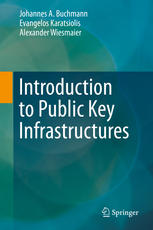

Most ebook files are in PDF format, so you can easily read them using various software such as Foxit Reader or directly on the Google Chrome browser.
Some ebook files are released by publishers in other formats such as .awz, .mobi, .epub, .fb2, etc. You may need to install specific software to read these formats on mobile/PC, such as Calibre.
Please read the tutorial at this link: https://ebookbell.com/faq
We offer FREE conversion to the popular formats you request; however, this may take some time. Therefore, right after payment, please email us, and we will try to provide the service as quickly as possible.
For some exceptional file formats or broken links (if any), please refrain from opening any disputes. Instead, email us first, and we will try to assist within a maximum of 6 hours.
EbookBell Team

4.0
26 reviewsThe introduction of public key cryptography (PKC) was a critical advance in IT security. In contrast to symmetric key cryptography, it enables confidential communication between entities in open networks, in particular the Internet, without prior contact. Beyond this PKC also enables protection techniques that have no analogue in traditional cryptography, most importantly digital signatures which for example support Internet security by authenticating software downloads and updates. Although PKC does not require the confidential exchange of secret keys, proper management of the private and public keys used in PKC is still of vital importance: the private keys must remain private, and the public keys must be verifiably authentic. So understanding so-called public key infrastructures (PKIs) that manage key pairs is at least as important as studying the ingenious mathematical ideas underlying PKC.
In this book the authors explain the most important concepts underlying PKIs and discuss relevant standards, implementations, and applications. The book is structured into chapters on the motivation for PKI, certificates, trust models, private keys, revocation, validity models, certification service providers, certificate policies, certification paths, and practical aspects of PKI.
This is a suitable textbook for advanced undergraduate and graduate courses in computer science, mathematics, engineering, and related disciplines, complementing introductory courses on cryptography. The authors assume only basic computer science prerequisites, and they include exercises in all chapters and solutions in an appendix. They also include detailed pointers to relevant standards and implementation guidelines, so the book is also appropriate for self-study and reference by industrial and academic researchers and practitioners.